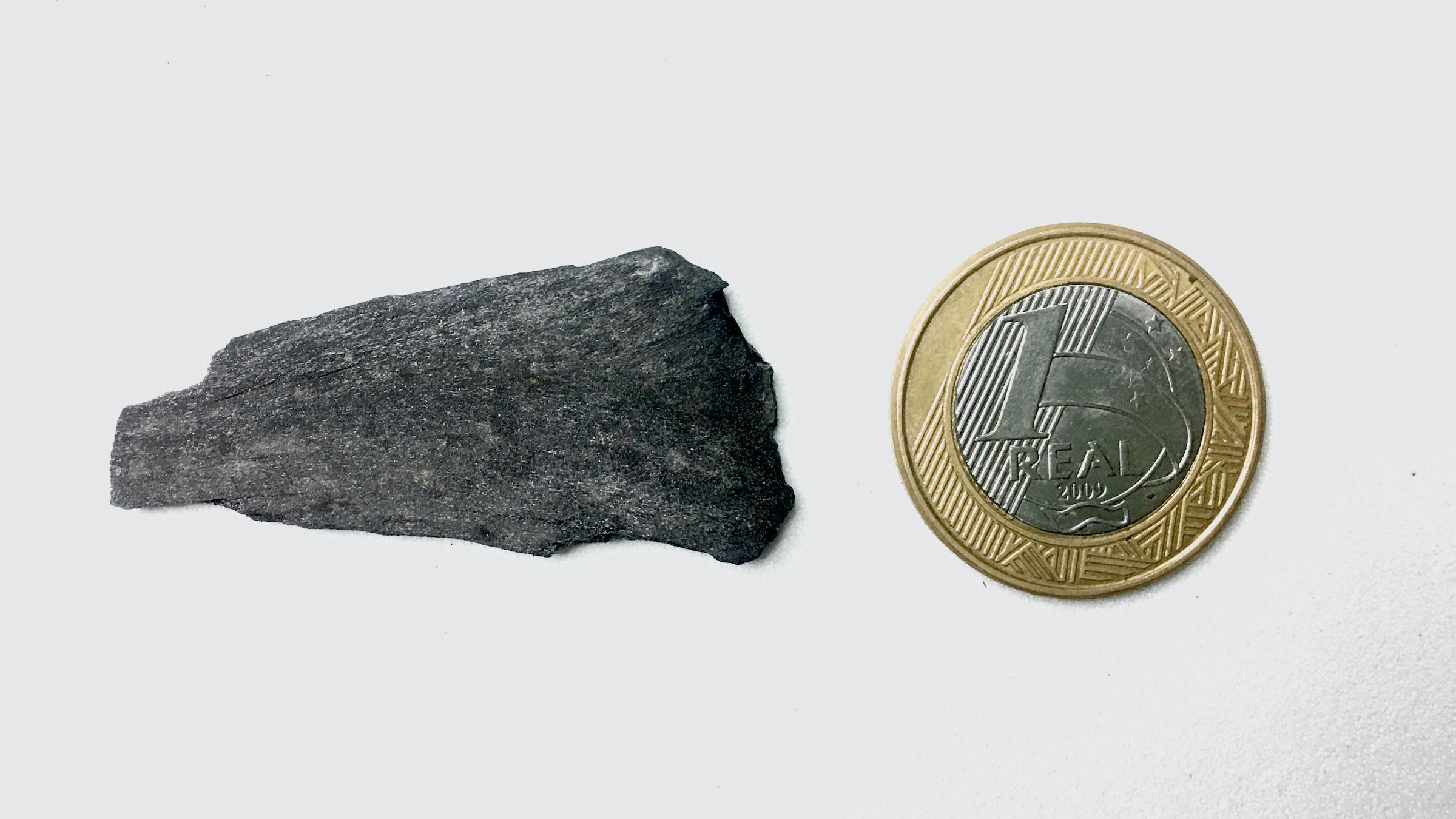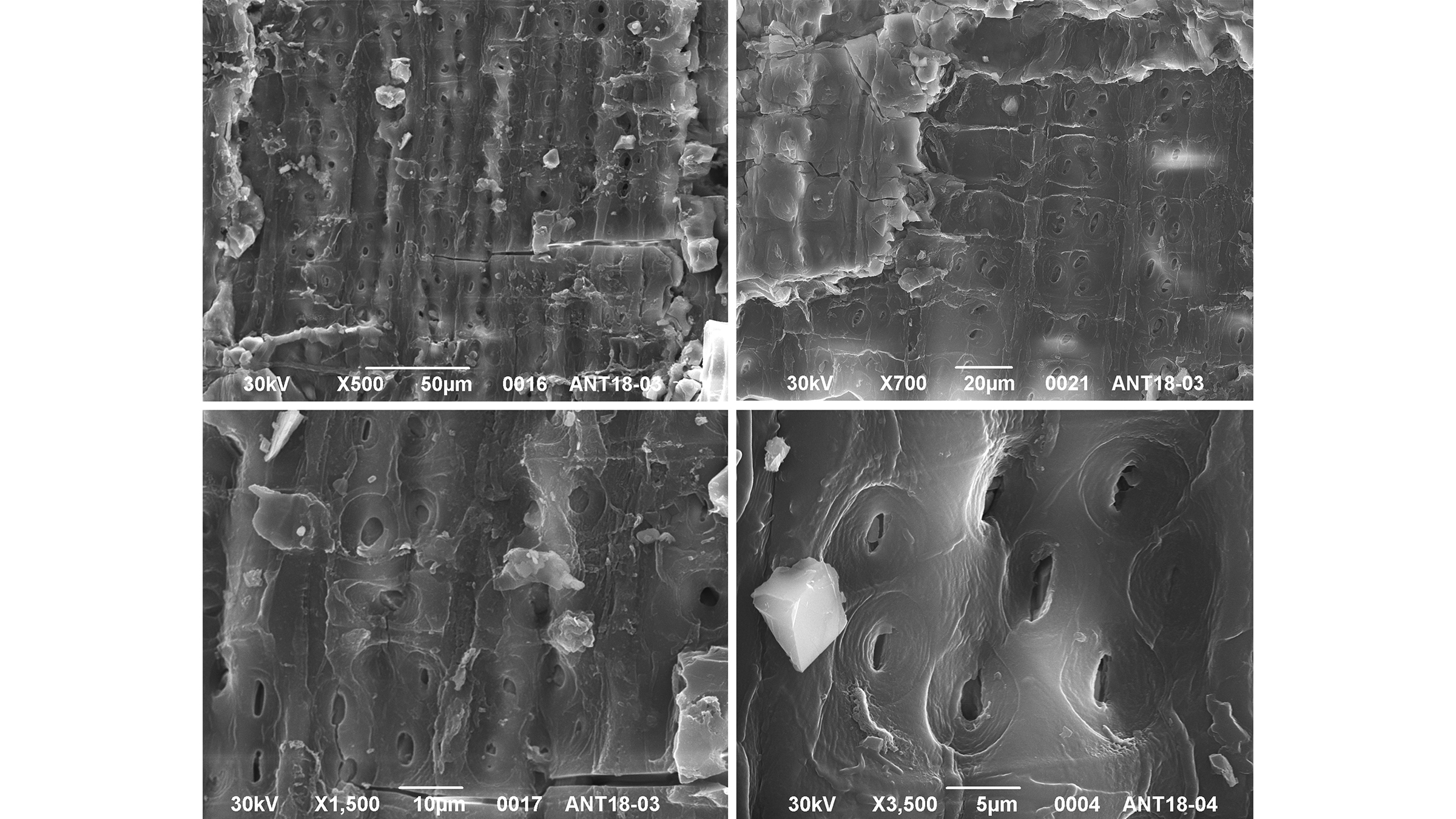Wildfires burned Antarctica 75 million years ago, charcoal remnants reveal
Volcanic activity may have sparked ancient wildfires.

Raging wildfires tore through Antarctica 75 million years ago, back when dinosaurs still roamed the Earth, a new study finds.
During the late Cretaceous period (100 million to 66 million years ago), one of the warmest periods on Earth, Antarctica's James Ross Island was home to a temperate forest of conifers, ferns and flowering plants known as angiosperms, as well as to a slew of dinosaurs. But it wasn't a total paradise; ancient paleo-fires burned parts of those forests to a crisp, leaving behind charcoal remnants that scientists have now scooped up and studied.
"This discovery expands the knowledge about the occurrence of vegetation fires during the Cretaceous, showing that such episodes were more common than previously imagined," study lead researcher Flaviana Jorge de Lima, a paleobiologist at Federal University of Pernambuco in Recife, Brazil, said in a statement.
Related: Icy images: Antarctica will amaze you in incredible aerial views
The finding marks the first evidence on record of a paleo-fire on James Ross Island, a part of the Antarctic Peninsula that now sits below South America. The discovery adds evidence that spontaneous fires were common in Antarctica during the Campanian age (about 84 million to 72 million years ago); in 2015, in a separate study, researchers documented the first known evidence of dinosaur-age wildfires in West Antarctica, according to a study in the journal Palaeogeography, Palaeoclimatology, Palaeoecology.

For the new work, an international team of scientists analyzed fossils collected during a 2015-2016 expedition to the northeastern part of James Ross Island. These fossils contained fragments of plants that looked like charcoal residue, which had weathered away over the past tens of millions of years.





The charcoal fragments were small — the largest paper-thin pieces were just 0.7 by 1.5 inches (19 by 38 millimeters). But scanning electron microscope images revealed their identity: These fossils are likely burned gymnosperms, likely from a botanical family of coniferous trees called Araucariaceae, the researchers found.
Sign up for the Live Science daily newsletter now
Get the world’s most fascinating discoveries delivered straight to your inbox.
Intense forest fires were frequent and widespread during the late Cretaceous, although most of the evidence for these blazes lies in the Northern Hemisphere, with a few documented cases in the Southern Hemisphere in what is now Tasmania, New Zealand and Argentina, the researchers said.
During the late Cretaceous, the supercontinent of Gondwana was breaking up, leaving places like Antarctica more isolated than before. This ice-free region had plenty of ignition sources, including lightning strikes, fireballs from falling meteors and volcanic activity, as well as flammable vegetation and high oxygen levels, which help fires burn, the researchers noted.
"Antarctica had intense volcanic activity caused by tectonics during the Cretaceous, as suggested by the presence of fossil remains in strata related to ash falls," the researchers wrote in the study. "It is plausible that volcanic activity ignited the palaeo-wildfire that created the charcoal reported here."
Now, the researchers are looking for new records of paleo-fires in other locations in Antarctica.
The study was published online Oct. 20 in the journal Polar Research.
Originally published on Live Science.

Laura is the archaeology and Life's Little Mysteries editor at Live Science. She also reports on general science, including paleontology. Her work has appeared in The New York Times, Scholastic, Popular Science and Spectrum, a site on autism research. She has won multiple awards from the Society of Professional Journalists and the Washington Newspaper Publishers Association for her reporting at a weekly newspaper near Seattle. Laura holds a bachelor's degree in English literature and psychology from Washington University in St. Louis and a master's degree in science writing from NYU.









